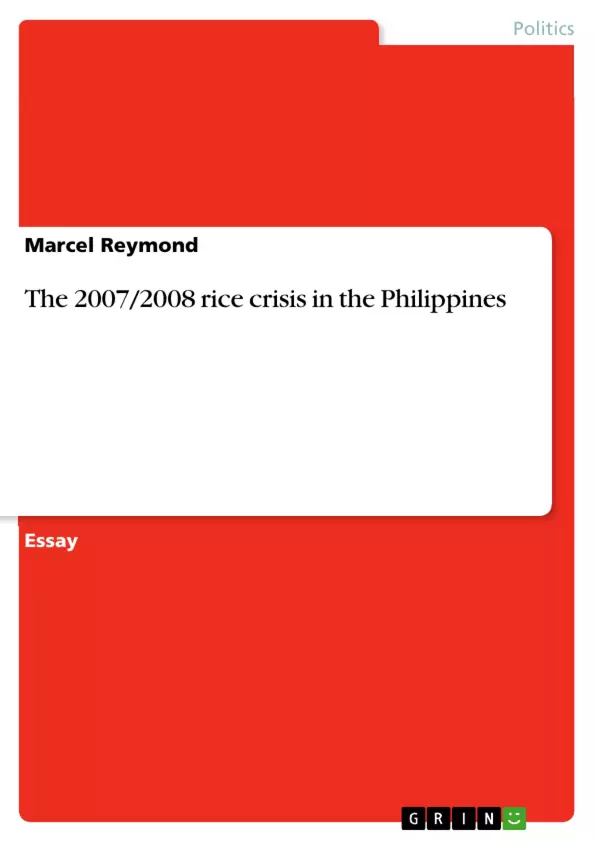This stud’s aim is to explain why in 2008, there were food related protests in the Philippines. The events have been analyzed using two frameworks. One examined the four dimensions of the food security concept as presented by the Food and Agriculture Organization (FAO), to understand the dynamic of the rice market; The other expounded the legitimacy of President Gloria Macapagal Arroyo’ s government, probing at the Philippines’ s level of democratization through an approach of historical institutionalism.
The staple crop in the Philippines is rice. If food prices in general started to increase from 2006, rice markets were slow off the mark. WMR wholesale prices in the Philippines shot up in mid-2007 and reached their peak in 2008. The food unrest critical period occurred between March 2008 and August 2008 when prices escalated Other points deemed important will be raised even if they happened outside of this time frame.
Table of Contents
- Introduction
- Food Security Aspects
- Legitimacy Aspects
- Material and Methods
- Food (In)security
- Arbeit zitieren
- Marcel Reymond (Autor:in), 2012, The 2007/2008 rice crisis in the Philippines, München, GRIN Verlag, https://www.grin.com/document/214724



